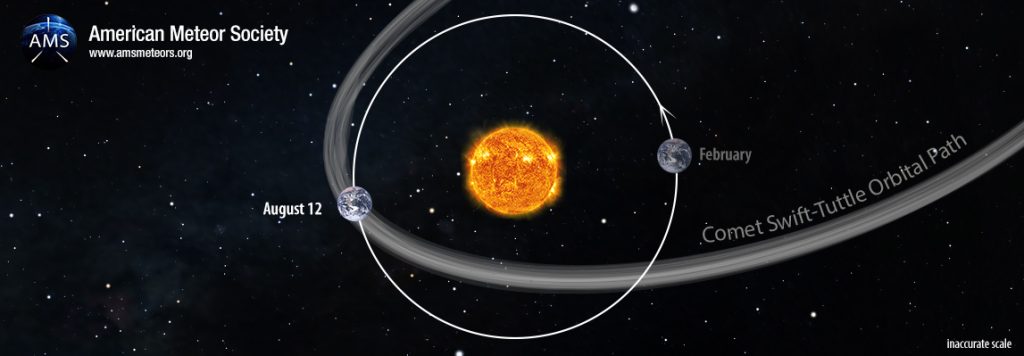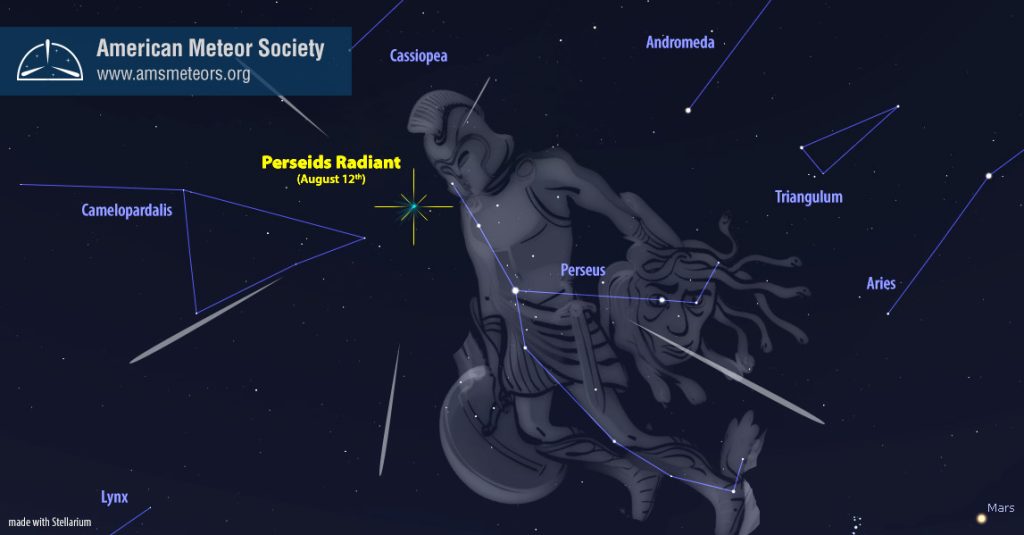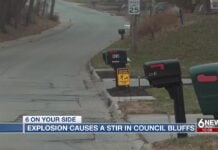
Earth has entered a stream of debris from Comet Swift-Tuttle, source of the annual Perseid meteor shower.
We’re only in the outskirts of the stream now, but already Perseid fireballs are streaking across the night sky.
The shower will peak in bright moonlight on Aug. 12-13 when Earth touches the densest part of the debris zone.
Observing tips
Comet Dust
Each July and August the Earth encounters debris left behind from comet 109P/Swift-Tuttle. This comet has an orbit of 133 years and last entered the inner solar system in 1992. Even though the comet now lies in the outer portions of the solar system, far away from Earth, we still encounter debris that has been left behind during the many trips this comet has made through the solar system.
This meteor shower is perhaps the most popular as it is active during the summer months in the northern hemisphere. There are stronger meteor showers but they appear during the colder time of year in the northern hemisphere when conditions are less inviting.
The strength of each Perseid display varies year to year, mainly due to lunar conditions. If a bright moon is above the horizon during the night of maximum activity, then the display will be reduced. Most of the Perseid meteors are faint and bright moonlight will make it difficult to view. Such is the case in 2022 when a bright full moon will lie above the horizon most of the night. Despite the glare of moonlight, the Perseids produce many bright meteors that can still be easily seen despite the bright moonlight.

August 12th / 13th
Note that date as the usual Perseid maximum occurs on the morning of August 12th. Due to the fact that the Earth revolves around the sun in 365 1/4 days, the maximum time of each shower advances 6 hours with each passing year. This is why the time of maximum activity shifts forward year to year. This is also why we need a leap year every 4 years to accommodate that extra 24 hours.
To view the Perseids at their best, you need to know when to watch:
- During the evening hours the radiant, the area of the sky where Perseid meteors shoot from, is located low in the northern sky. This is the worst time to try and view the shower for sheer numbers as most of the activity will occur beyond your line of sight, being blocked by the horizon. The few that do come your way this time of night are special. The reason is that they just skim the upper regions of the atmosphere and will last much longer than Perseids seen during the morning hours. Since they last longer they also will travel a much longer distance across the sky. Most of these “earthgrazing” Perseids will be seen low in the east or west, traveling north to south. Occasionally one will pass overhead and will be unforgettable as you watch it shoot across the sky for several seconds. While these meteors are few, they are certainly worth the effort to try and catch.
- As the Earth rotates and the time approaches local midnight, the Perseid radiant has risen higher into the northeastern sky. The meteors are now shorter and last only a few tenths of a second. You still only see about half of the actual activity as the remainder still occur beyond your line of sight.
- As the morning progresses, the activity will increase as the radiant climbs higher into the sky.
- Theoretically, the best time to watch the Perseids is just before the break of dawn when the radiant lies highest in a dark sky. This is usually around 04:00 local time. Experienced observers often say the hour between 03:00 and 04:00 is usually the best, not 04:00 to 05:00.
Best time to watch the Perseids
In 2022, the expected time of maximum will occur near 01:00 Universal Time. This corresponds 9pm EDT and 6pm PDT on the evening of August 12th. Unfortunately at these times the Perseid radiant lies close to the northeastern horizon so the best rates for viewing from North America will be during the early morning hours of August 13th when the Perseid radiant lies higher in the sky.
If you cannot observe on that night activity will still be good on the nights prior and after maximum. The further you watch from August 13th, the weaker the display will be.
More tips
- To view the Perseids successfully, it is suggested you watch from a safe rural area that is as dark as possible. The more stars you can see, the more meteors will also be visible. No matter the time of night, Perseid meteors can be seen in all portions of the sky.
- With the full moon low in the southern sky this year, it is advisable to aim your center of view about half-way up in the northern sky. Don’t look straight up as more activity is visible at lower elevations.
- Some observers like to view toward the constellation Perseus and the radiant. This way they can see Perseid meteors travel in all directions. The disadvantage of viewing in this direction is that the Perseid meteors will be short, especially near the radiant. The other choice is to face away from the radiant and witness longer meteors, which are more impressive.

Viewing this meteor shower is fun, but one can also contribute useful scientific data on each meteor you see.
A period of at least an hour is suggested as meteor displays are notoriously variable. One can watch for 10 minutes and see no activity at all! Just a few minutes later several meteors may appear nearly simultaneously.
To even out these “peaks and valleys” is why we ask for viewing periods of at least an hour.
In the meantime, have fun watching the Perseids’ fireworks. Keep your eyes to the sky and enjoy the show! [IMO]
StrangeSounds.org has been banned from ad networks and is now entirely reader-supported CLICK HERE TO SUPPORT MY WORK… I will send you a small gemstone if you give more than 25$… Thanks in advance!
Another way to support my work is by signing in to get FREE information about how to invest in GOLD, SILVER and other PRECIOUS METALS to limit the effects of inflation on your IRA/4001K… You won’t regret it!
You will finally find some great affiliate products that I recommend you to add to your disaster & preparedness kit:
- Protect your home and car with the best EMP, solar flares and lightning shield available…
- GOLD; SILVER; It’s time to invest in PRECIOUS METALS to fight INFLATION and achieve the retirement peace of mind you deserve…
- Stock up on Iodine tablets for the next nuclear disaster…
- Health Ranger Store: Buy Clean Food and Products to heal the world…
- You will ALWAYS have electricity with this small portable SOLAR power station…
- Qfiles is another great site for alternative news and information…














It’s a great science article
Monsoons skunk my view. Last year too. I set up my chaise lounge, small table, and some juice. Storm rolled in, and that was it. Not a chance. Normally, we have excellent star gazing offgrid. Back in the 1960’s we would hit the beach at night and watch.